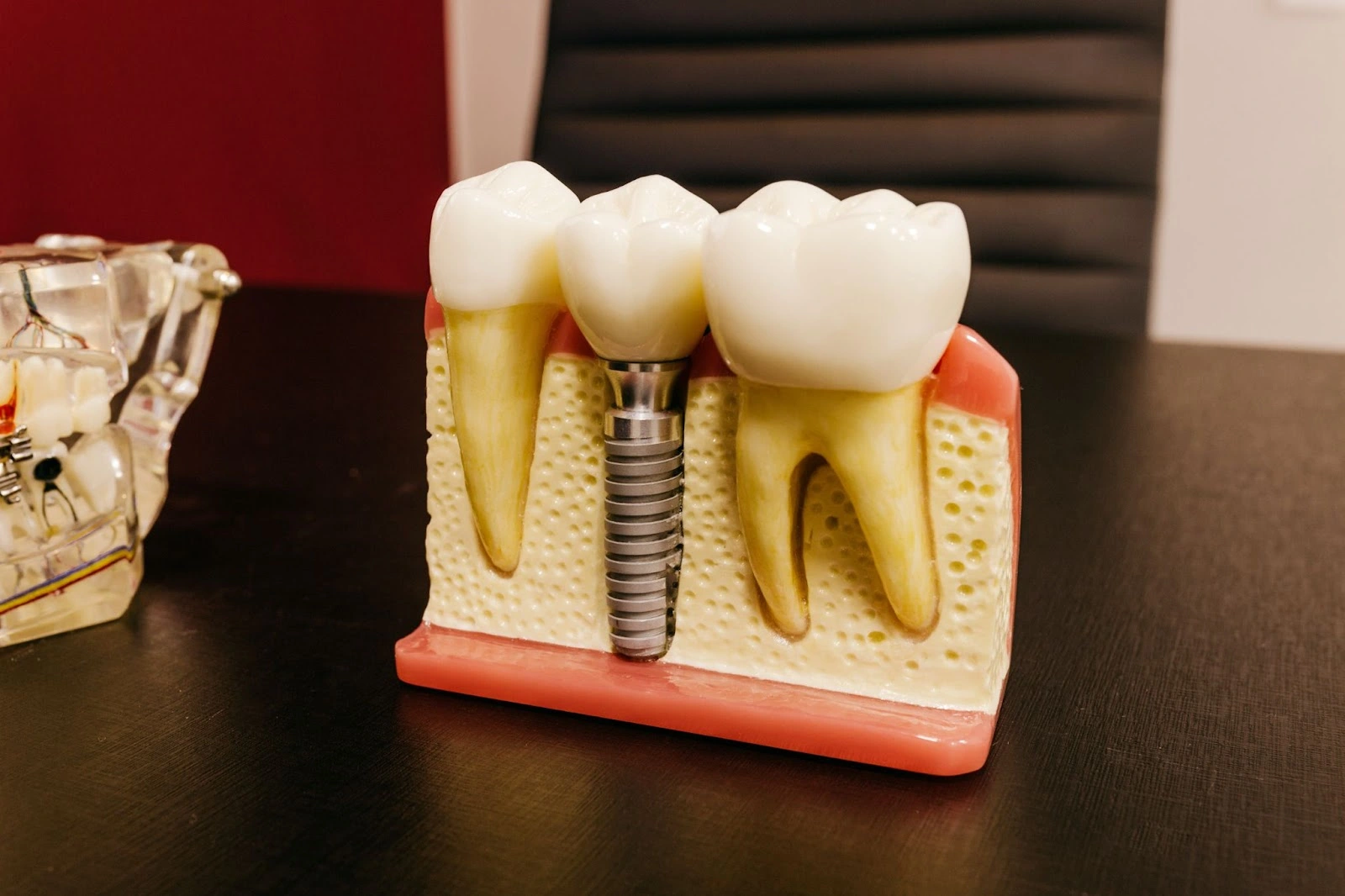Navigating dental terminology can feel overwhelming, especially when you’re already sitting in the dentist’s chair and trying to quickly decipher terms like SRP, gingivitis, or dentin. But understanding these words isn’t just helpful—it’s essential for taking charge of your oral health and helping you feel confident in your care plan.
To make things simpler, Bayshore Family Dental has compiled a list of seven common (but often unclear) dental terms and their meanings. These insights, explained by our dentist in Dunedin, will help you feel prepared for your next visit.
1. What Is SRP in Dentistry?
SRP stands for scaling and root planing, a.k.a. dental deep cleaning. It’s used to treat gum disease. Unlike a regular dental cleaning that focuses on the surface of your teeth, SRP addresses bacteria and plaque below the gum line.
- Scaling: Our Dunedin dentist removes plaque buildup from hard-to-reach areas of your mouth, going deep under your gum line to where bacteria like to hide.
- Root Planing: We then smooth out rough areas on the roots of your teeth, helping your gums heal and reattach and preventing buildup from happening again.
Untreated gum disease can cause tooth loss and even impact your whole-body health. SRP is an effective way to restore your oral health before we have to move on to more serious treatments.
2. What Are “Gingivitis” and “Periodontitis,” and Is There a Difference?
We’ve all heard of gingivitis in commercials for mouthwash and the like, but what does it mean? It’s actually a kind of gum disease—the early stage—characterized by red, swollen, or bleeding gums. With proper treatment and good oral hygiene, it is completely reversible. Periodontitis is the advanced stage of the disease, where the infection spreads deeper, potentially causing damage to the bone that supports your teeth.
Professional cleanings, including SRP, can remove the plaque and bacteria causing these conditions. Our dentist in Dunedin might also recommend additional treatments, such as antibiotics or specialized rinses, to control the infection.
3. What Are “Caries,” and How Do Fillings Help?
The term “caries” is just a more technical word for cavities. Dental caries are caused by acids produced by bacteria when they feast on sugars left behind by what you eat. That’s why we associate foods like candy and soda with cavities—they’re full of fuel for bacteria.
If you have a cavity, our dentist will remove the decayed portion and fill the space with a dental filling. This restores the structure and function of your tooth while also preventing further decay. Regular checkups are essential for catching caries early before they cause discomfort or require more invasive treatment, like a root canal.
4. What Is “Dental Prophylaxis,” and Why Is It Crucial for Preventive Care?
The word “prophylaxis” means to prevent disease. Dental prophylaxis, therefore, refers to the care you receive to prevent oral issues like tooth decay and gum disease. The most common form of dental prophylaxis is teeth cleaning. Think of cleanings as your dental tune-ups—they remove lingering plaque, tartar, and stains that your daily brushing and flossing might miss.
This procedure doesn’t just leave your mouth feeling fresh—it’s your first line of defense against more serious dental problems. Prophylaxis is usually performed every six months, though the team at Bayshore Family Dental may recommend more frequent cleans if you’re at higher risk for gum disease.
5. What Is “Bruxism,” and Why Should You Never Ignore It?
Bruxism is the technical term for teeth grinding or clenching. While it might seem harmless, over time, bruxism can lead to tooth wear, jaw pain, headaches, and even cracked teeth.
Common signs include flattened or chipped teeth, sore jaws, or unexplained tooth sensitivity. Our dentist in Dunedin might suggest a custom nightguard to prevent long-term damage and relieve jaw and tooth pain caused by bruxism.
6. What Is a “Malocclusion,” and How Is It Fixed?
Ever been told your bite isn’t quite right? Feel like your teeth don’t quite match up when you close your mouth? That’s what “malocclusion” means—a misalignment of your teeth or jaw.
Bad bites affect your appearance, chewing, speaking, and even oral hygiene. Orthodontic treatments like clear aligners can correct this issue.
7. What Do “Enamel,” “Dentin,” and “Pulp” Mean in Dental Care?
These are all parts of your teeth. Understanding your oral anatomy can help you take better care of your smile. Here’s a quick breakdown:
- Enamel: The hard, outermost layer of your tooth that protects it from wear and decay. Fun fact: enamel is the hardest substance in your body.
- Dentin: The layer beneath the enamel, which is slightly softer and sensitive to damage or stimuli if the enamel wears away due to decay, damage, or bruxism.
- Pulp: The innermost part of your tooth, containing nerves and blood vessels. If this area becomes infected, you may need a root canal.
From Knowledge to Action: Book Your Visit Today
At Bayshore Family Dental, we believe that informed patients are healthier patients. We’re here to answer your questions and ensure you leave every visit smiling confidently. Now that you’ve mastered these dental terms, there’s just one more step to take toward better oral health—book your next checkup today with our dentist in Dunedin.


